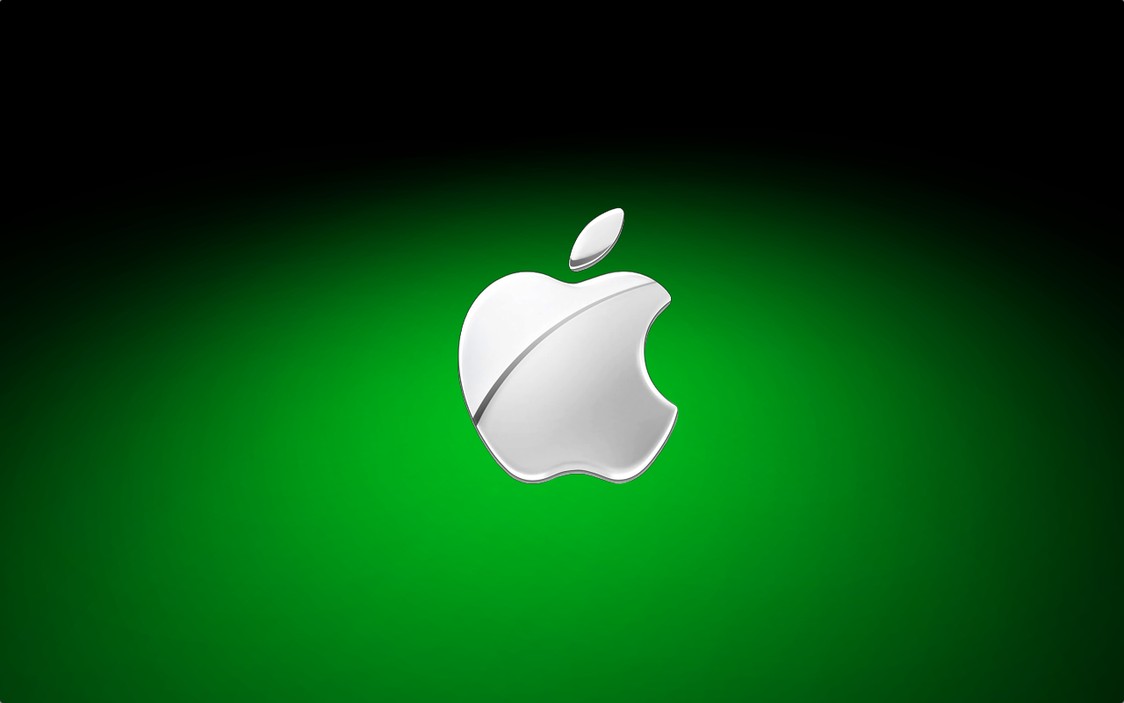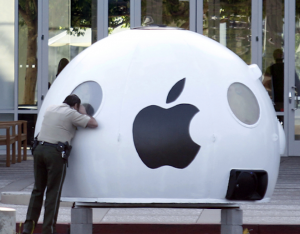By Alison van Diggelen, host of Fresh Dialogues
I recently recorded a story for KQED radio about Apple’s “dirty” iCloud and the more I dug into the issue, the greener the world’s most valuable company appeared to get. By the time I’d finished researching the topic, visiting a local data center, talking with an expert in energy efficiency, and interviewing members of the public at my local Whole Foods store, Apple released a statement announcing it was going “all in.”
“By the end of 2012, we’ll meet the energy needs of our Maiden, North Carolina, data center using entirely renewable sources,” the statement read.
The data center is a LEED Platinum building (the highest rating of the US Green Building Council standards) with an impressive collection of energy efficient design features from a chilled water storage system to a white cool roof which maximizes solar reflection. The whole project looks so “insanely green” it might start to make once green-revered Google turn a shade of (envious) green.
Was it the black balloons released in Apple’s spectacular retail stores in the Bay Area and around the world? The giant iPod “squatting” outside Apple’s Headquarters in Cupertino? The supersize iPhones walking around the campus demanding Apple clean its “dirty” cloud? The slick video or the 200,000+ petitions asking Apple CEO Tim Cook to stop using dirty coal? The environmental group Greenpeace would like to think so.
But it’s likely that none of the above induced Apple to green its cloud. These decisions to install 20 MW of solar arrays (from SunPower) and the largest non-utility fuel cell installation (from Bloom Energy) were years in the making, and the Greenpeace campaign weeks old. But having Greenpeace on its case does appear to have helped Apple discover some transparency in its operations. Something for which it’s not exactly famous. And that transparency will likely spur further clean action from other IT companies.
In a detailed release, Apple explained exactly where the 60% onsite clean energy is coming from and made a public commitment to power the remainder using local and regional clean energy supplies, including NC GreenPower.
In the war of words and facts between the environmentalist group and Apple, prior to the company coming clean, several commentators accused Greenpeace of “doing a Mike Daisey” on Apple. That is, intentionally fabricating the facts to make a stronger case against the tech giant. In the end, Greenpeace spokesperson Gary Cook told me, “We will continue our campaign to push Apple – and other IT giants like Microsoft and Amazon – to clean the cloud until Apple has policies to ensure that they will grow using exclusively clean energy.”
As for Google and the other fast growing cloud users like Amazon and Microsoft, we’ll be watching closely to see if a “greener than thou” race starts warming up. Each leapfrogging the other to out-green their competitor’s data centers. A race for the most insanely green cloud? Bring it on.





